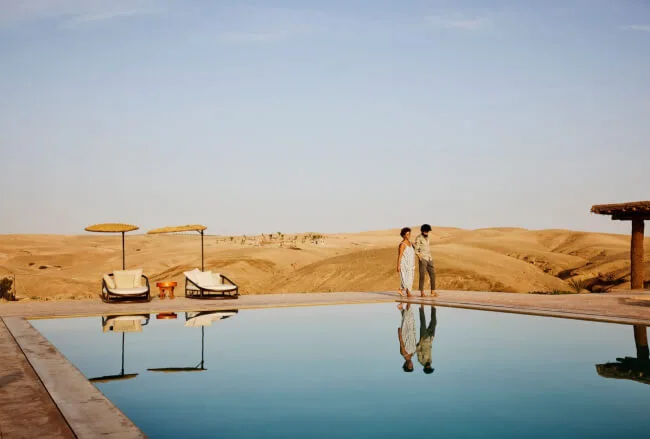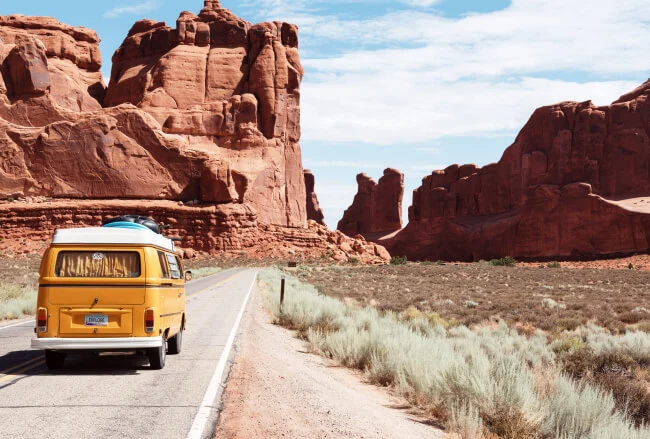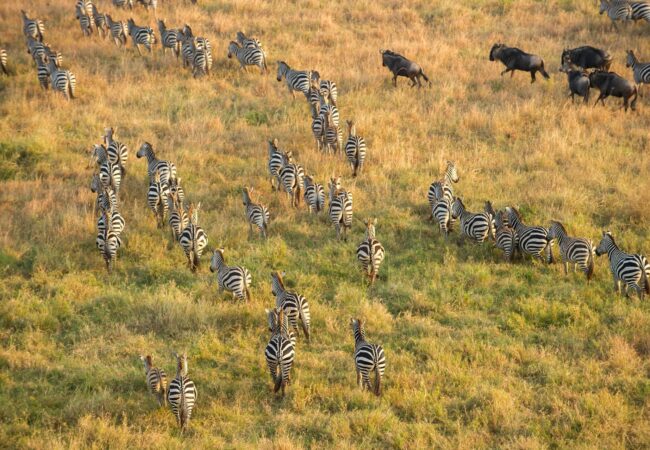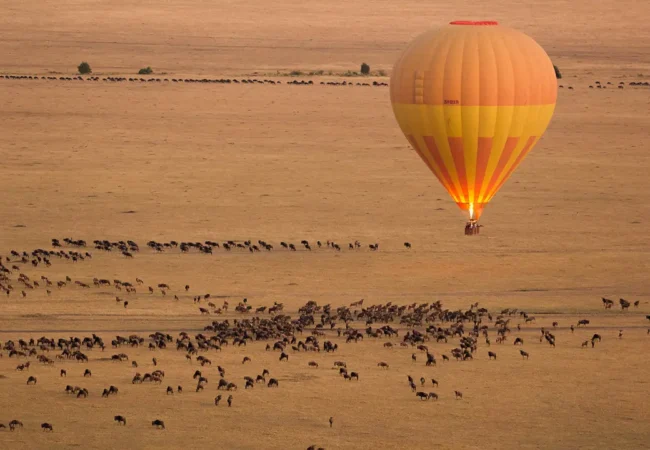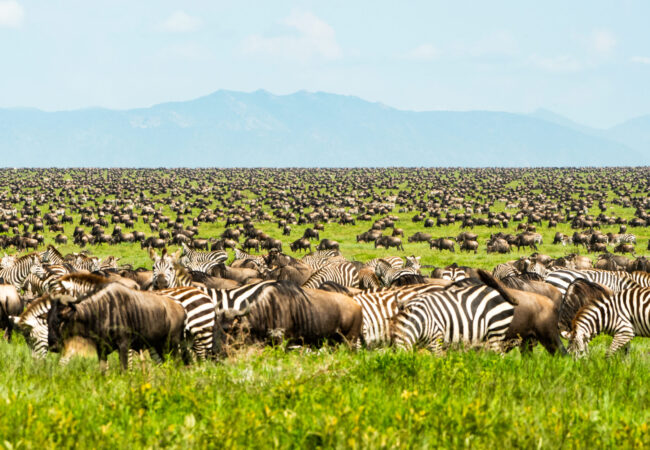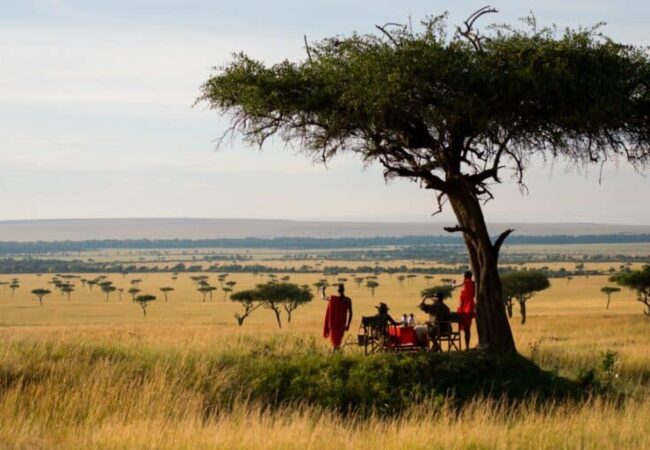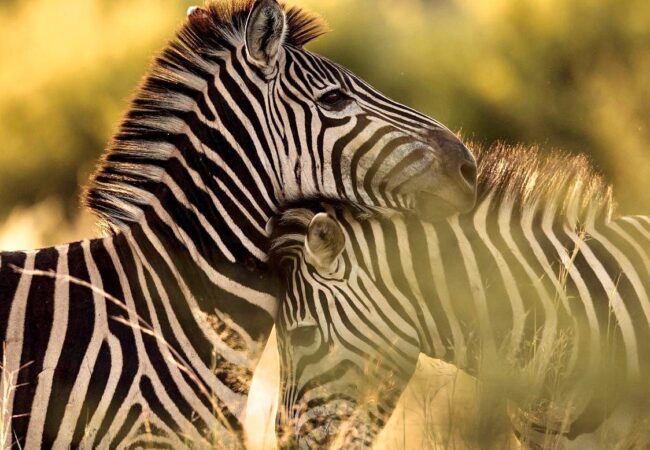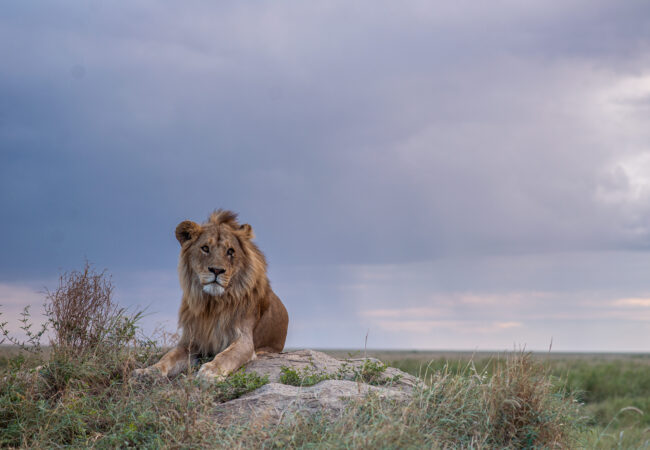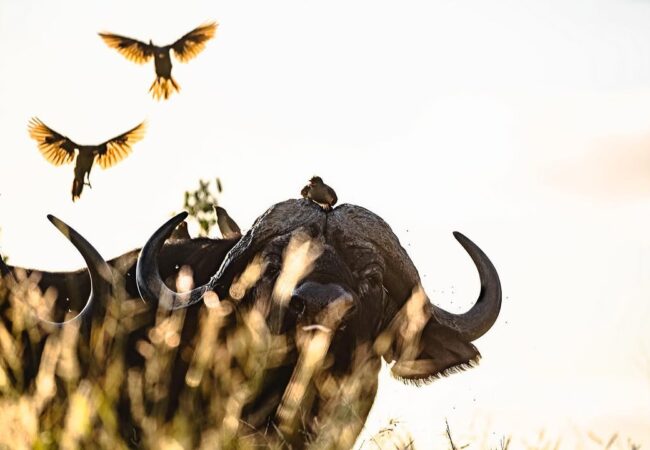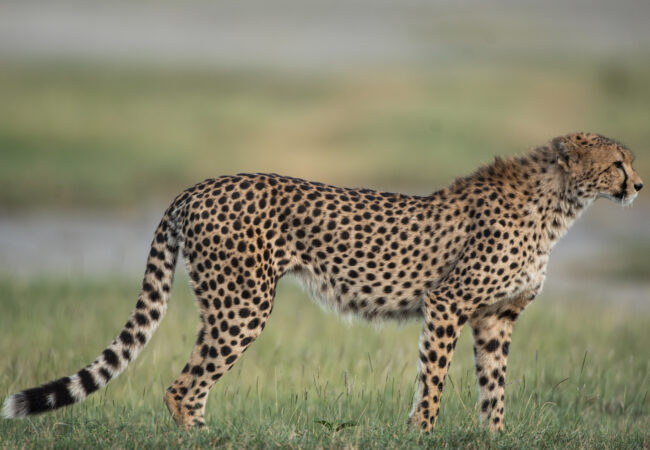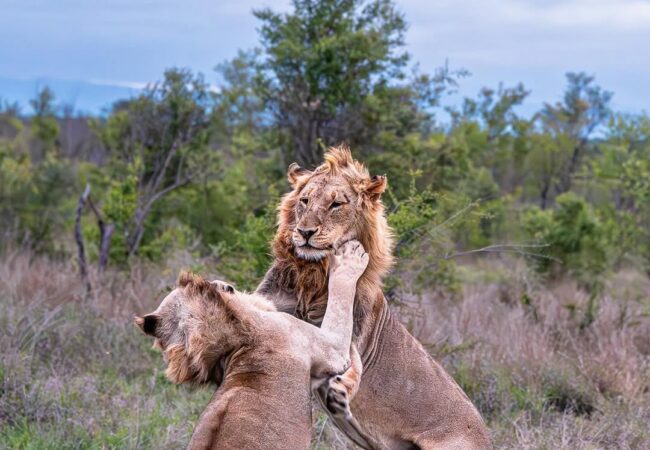Introduction: A Compact Park With Incredible Diversity
Cradled at the base of the Great Rift Valley escarpment and wrapped around a shimmering alkaline lake, Lake Manyara National Park may be one of Tanzania’s smaller national parks, but it packs an incredible punch. This lush and vibrant ecosystem, covering just over 325 square kilometers, is a sanctuary of varied landscapes, diverse wildlife, and peaceful beauty.
Lake Manyara is famous for its tree-climbing lions, large flocks of flamingos, and the feeling of being immersed in a jungle safari—where baboons greet you at the gate and waterfalls tumble from high cliffs above.
For travelers seeking an offbeat, photogenic, and accessible wildlife experience, Lake Manyara is a delightful introduction to the treasures of northern Tanzania.
Geography and Ecosystems: Nature’s Tapestry in Motion
Lake Manyara lies about 125 km west of Arusha, on the way to Ngorongoro and Serengeti. The park stretches from the lake’s eastern shores to the towering cliffs of the Rift Valley wall, creating a stunning mix of topography and vegetation.
🌿 What Makes the Landscape Unique:
- Groundwater Forests: Fed by underground springs, these lush jungles are filled with mahogany, fig, and tamarind trees.
- Acacia Woodlands: Open, grassy plains where herbivores graze.
- Hot Springs (Maji Moto): Bubbling thermal pools in the southern part of the park.
- Swamps and Floodplains: Seasonal wetlands that attract birdlife and large mammals.
- Lake Manyara: A shallow soda lake that expands and contracts with the seasons, home to flocks of flamingos, pelicans, and storks.
The park’s elevation and water sources allow for an incredibly diverse ecosystem to thrive in a small area.
Wildlife Highlights: Small in Size, Big on Diversity
Despite its compact footprint, Lake Manyara is bursting with wildlife. It’s a great place to see animals up close and in a more intimate setting compared to the wide-open plains of Serengeti.
🦁 1. Tree-Climbing Lions
Lake Manyara is one of the few places in Africa where lions regularly climb trees—a rare and intriguing behavior. These majestic predators are often seen lounging on the limbs of acacia trees, resting in the shade and watching the plains below.
🐘 2. Elephant Encounters
Elephants roam freely in the park’s forested areas. Thanks to the dense jungle-like surroundings, sightings here are often dramatic—elephants suddenly emerging from the green, ears flared, tusks shining.
🐒 3. Baboons & Primates Galore
Lake Manyara is famous for having one of the largest troops of olive baboons in Africa—sometimes hundreds in a group. Vervet monkeys and blue monkeys are also common in the forest areas.
🦌 4. Other Mammals
You’ll find:
- Buffalo
- Wildebeest
- Giraffe
- Warthogs
- Hippos (especially in the Simba River area)
- Bushbuck, impala, dik-dik, and klipspringer
🦩 5. Birdwatcher’s Paradise
Lake Manyara is a Ramsar-designated wetland and one of the best birding destinations in East Africa.
With over 400 bird species, you can expect:
- Flamingos (especially during wet season)
- Pelicans, egrets, and storks
- Crowned eagles
- Hornbills, kingfishers, and turacos
Whether you’re an expert birder or a casual traveler, the colorful variety is sure to amaze.
Experiences & Activities in Lake Manyara National Park
🚗 1. Game Drives
Standard morning and afternoon game drives allow you to explore the various ecosystems. The roads are well-maintained and easily accessible, making it ideal even for short visits or family safaris.
🐾 2. Walking Safaris
Guided walks are available outside the main wildlife zone, especially near Manyara Ranch Conservancy. These walks offer a chance to learn about smaller flora and fauna, animal tracks, and birdlife.
🌉 3. Treetop Canopy Walk
Unique to Lake Manyara, the 500-meter-long treetop walkway allows visitors to walk high above the forest floor on suspended bridges, offering a bird’s-eye view of monkeys, butterflies, and birds in the canopy.
🏞 4. Hot Springs at Maji Moto
Located in the park’s southern zone, these bubbling natural springs release steaming water and minerals from deep within the earth. Though not for swimming, they’re fascinating to visit and photograph.
🌅 5. Cultural Tours in Mto wa Mbu
Just outside the park’s entrance is the lively town of Mto wa Mbu, known for its agricultural diversity and cultural melting pot.
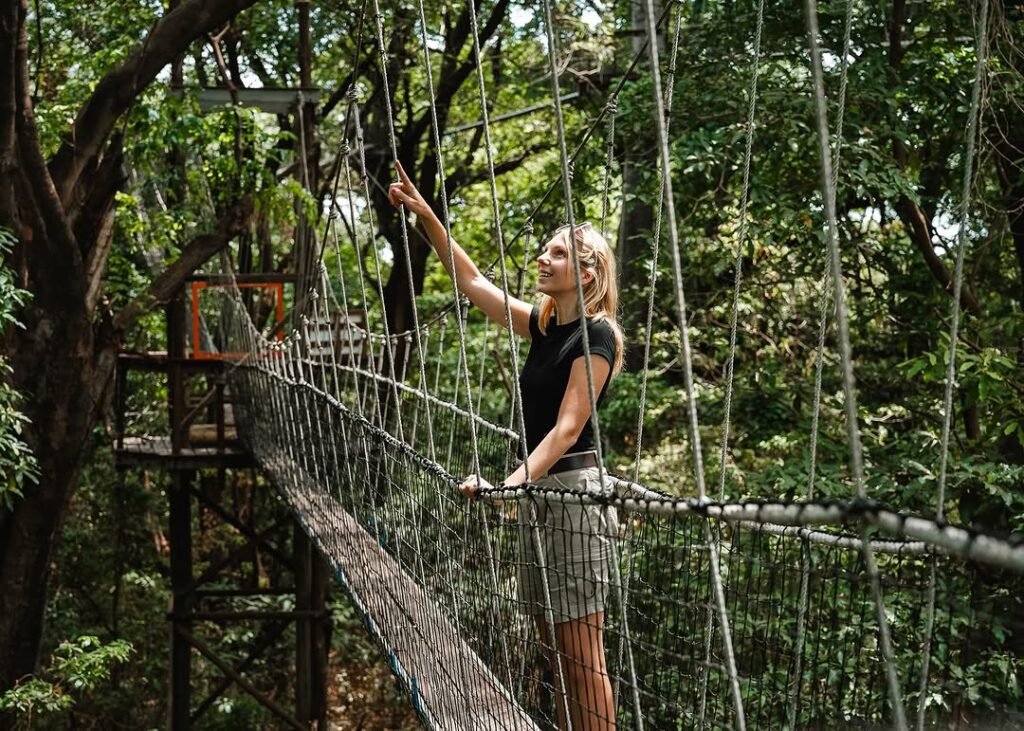
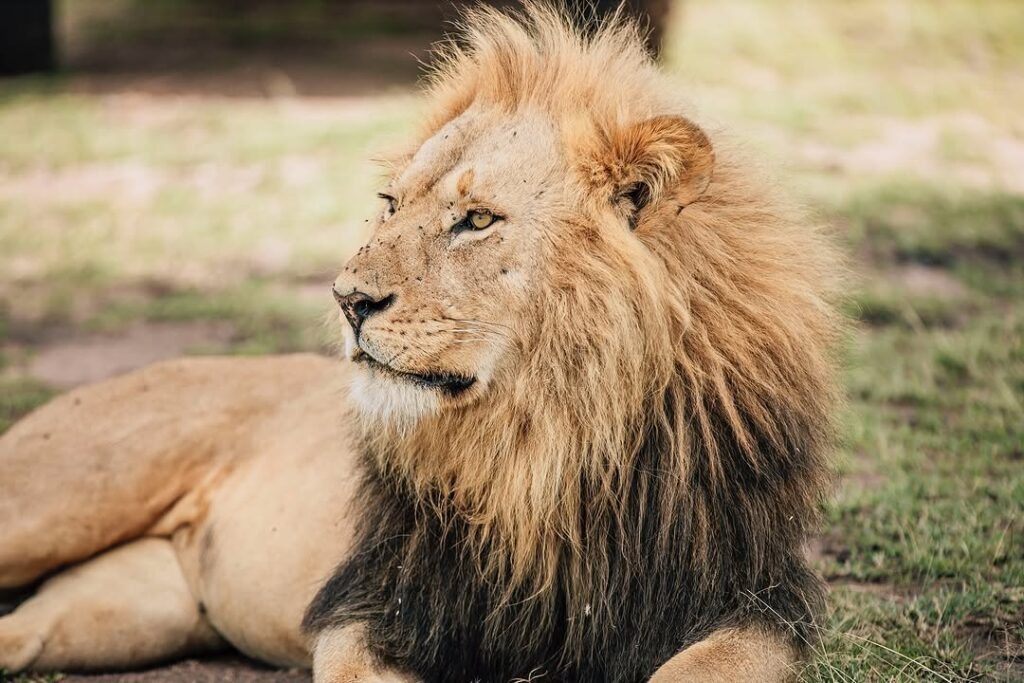
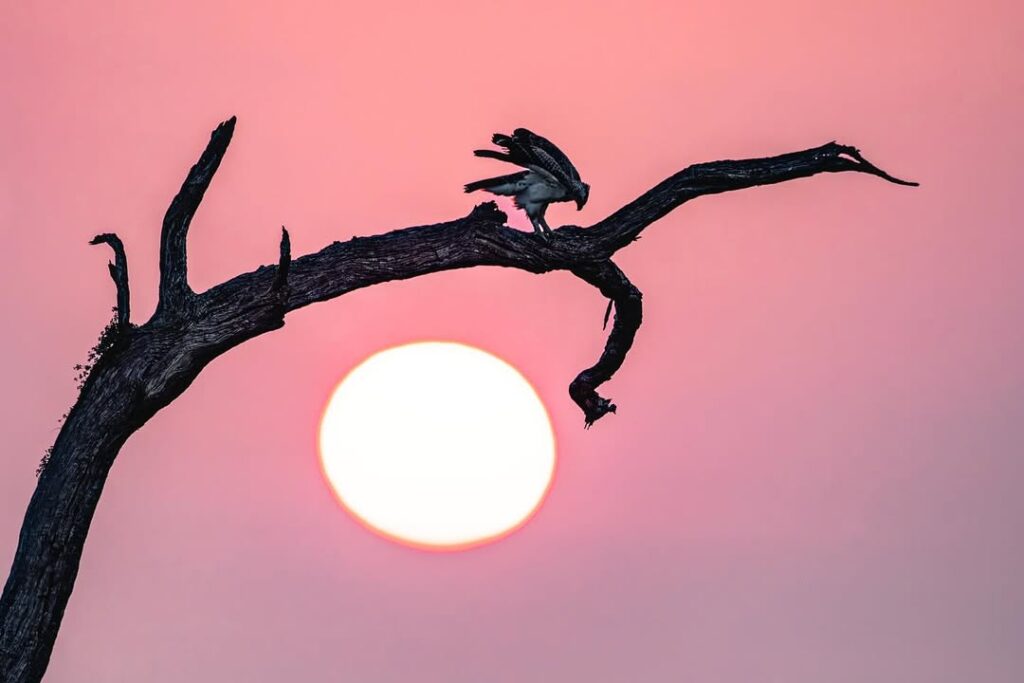
Best Time to Visit Lake Manyara
- Dry Season (June – October):
- Best wildlife viewing
- Animals concentrate around the water
- Fewer mosquitoes
- Wet Season (November – May):
- Best for birdwatching, especially flamingos
- Lush scenery and dramatic waterfalls
- Fewer tourists
